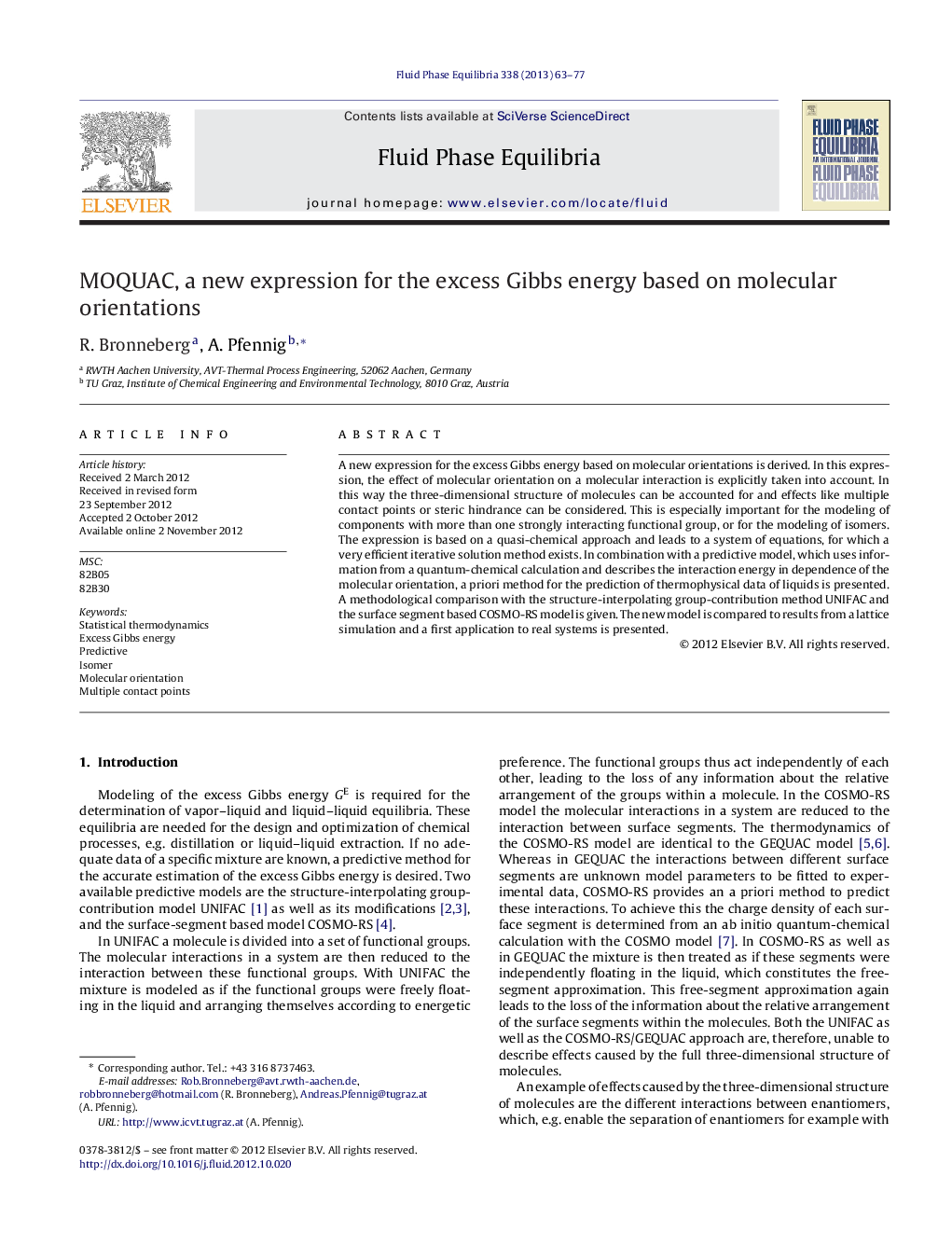| Article ID | Journal | Published Year | Pages | File Type |
|---|---|---|---|---|
| 201842 | Fluid Phase Equilibria | 2013 | 15 Pages |
A new expression for the excess Gibbs energy based on molecular orientations is derived. In this expression, the effect of molecular orientation on a molecular interaction is explicitly taken into account. In this way the three-dimensional structure of molecules can be accounted for and effects like multiple contact points or steric hindrance can be considered. This is especially important for the modeling of components with more than one strongly interacting functional group, or for the modeling of isomers. The expression is based on a quasi-chemical approach and leads to a system of equations, for which a very efficient iterative solution method exists. In combination with a predictive model, which uses information from a quantum-chemical calculation and describes the interaction energy in dependence of the molecular orientation, a priori method for the prediction of thermophysical data of liquids is presented. A methodological comparison with the structure-interpolating group-contribution method UNIFAC and the surface segment based COSMO-RS model is given. The new model is compared to results from a lattice simulation and a first application to real systems is presented.
► A new excess function model called MOQUAC is derived. ► MOQUAC can take the full three-dimensional molecular structure into account. ► The new model can be applied predictively. ► First results of an application of MOQUAC to real components are presented.
